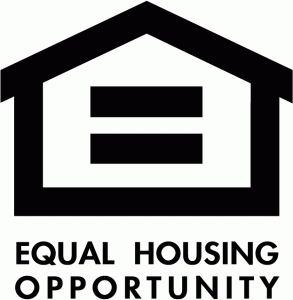Discover the Benefits of a Reverse Mortgage Line of Credit
Relax, reminisce, and relish retirement. A reverse mortgage could be your ticket!
Reverse mortgages have become more attractive as a result of low mortgage rates, which have given homeowners the ability to access more of their home’s equity, even if its value hasn’t considerably gone up. In a reverse mortgage, this ultimately makes more money available to the homeowner, who could use the funds in retirement for healthcare, home repairs and more.
The big question for millions of seniors is: Is it worth using this tappable equity, or do the risks outweigh the benefits. Here we’ll examine the pros and cons. But first, let's answer the question. What is a reverse mortgage?
What is a Reverse Mortgage?
A reverse mortgage is a form of cash-out refinancing that allows property owners 62 and older to convert real estate equity into spendable cash. Virtually all reverse mortgages are insured through the Federal Housing Administration, (FHA), which means if the debt is not repaid by the borrower, it will be repaid with FHA reserves. The government calls reverse mortgages “HECMs,” short for Home Equity Conversion Mortgages, and borrowers must pay insurance premiums to participate. These premiums are used to fund the FHA’s reserves.

How Do Reverse Mortgages Work?
Reverse mortgages are very different from traditional mortgages. With a traditional mortgage, if you borrow $100,000 at 3.4 percent fixed-rate interest for 30 years, you’ll have a $443.48 monthly payment (principal and interest). However, if you borrow $100,000 with a reverse mortgage, your required monthly payments for principal and interest are zero.
Pros and Cons of Reverse Mortgages
Every form of financing has its pros and cons. With a reverse mortgage, here are some of the key issues to consider.
Pros of a reverse mortgage:
Boosts Cash Flow:
- Post-retirement, many seniors face a drop in income. With ample home equity, they can refinance and even extract cash with a reverse mortgage.
Stay Put, Age in Place:
- Most adults, especially those aged 50 and older, desire to age in their own homes. A reverse mortgage can make this dream a reality, saving the costs of relocating.
Potential Cost Efficiency:
- While there are expenses associated with reverse mortgages, they may prove to be less than the costs of moving.
Tax-Free Money:
- The IRS deems reverse mortgage payments as loan proceeds, not income, making them non-taxable.
No Claim Against Heirs:
- Lenders have no claims against other assets or heirs if the reverse mortgage debt surpasses the property's market value.
You Still Own Your Home:
- Reverse mortgages end when borrowers move, sell, or pass away. Heirs can decide how to manage the property and the debt thereafter.
Cons of a reverse mortgage:
It's Not Free:
- Reverse mortgages come with lender fees, FHA insurance charges, and closing costs.
Interest Rates Variances:
- HECMs offer both fixed-rate and adjustable-rate options, each with its pros and cons.
Potential Program Violations:
- Acquiring a reverse mortgage may breach asset restrictions for Medicaid and SSI.
Foreclosure is Possible:
- Seniors can face foreclosure if they neglect property taxes, insurance, or HOA bills.
Complexities Around Status Changes:
- Issues may arise if a borrower moves to a care facility or if they marry post-obtaining a reverse mortgage.
How is this possible?
With our model $100,000 mortgage, the borrower pays $443.48 each month. Of this amount, $160.15 is paid toward principal in the first month to reduce the loan balance. The rest of the payment — $283.33 — is interest, or what the lender charges you for loaning you money.
In the second month, the balance has been reduced to $99,839.85. The monthly payment is still $443.48, but now the interest cost has been reduced to $282.88 while the principal payment has grown to $160.60. The payment plan continues like this, with more of the payment going to the principal and less to interest over time, until the loan term is up.
With a reverse mortgage the process is, well, reversed. Instead of making a $443.48 payment each month, the borrower pays nothing. This does not mean the loan is free, however. Instead, the interest cost — $282.8 — is added to the mortgage balance. In the second month, the balance grows to $100,282.88. Since the loan balance is now a little bigger, the interest cost is a touch higher, and this process continues until the time comes for the loan to be repaid.

Reverse mortgage calculator results are an estimate and not an offer to lend. Calculations are based on available programs offered this week and subject to change. These materials are not from HUD or FHA and were not approved by HUD or a government agency.
HUD's Evolution of HECM Standards: A Look at the Changes
Why the Change?
HUD's HECM standards underwent several modifications over recent years. The driving force behind this was the significant program losses amounting to billions.
2013: Addressing Immediate Losses
- To curtail these losses, HUD, in 2013, set limitations:Capped the sum HECM borrowers could derive from a property.
- Restricted the cash amount borrowers could extract from a HECM in its initial year.
2014: The Introduction of 'Residual Income' Requirement
- Mirroring the successful VA refinance program, HUD integrated a 'residual income' criterion.
- This ensures that post major expenses, borrowers retain enough funds to cover monthly living expenses, which encompasses property taxes and insurance.
2017: A Two-Pronged Approach
- Financing Reduction: HUD decreased the amount reverse borrowers could finance. As per AARP, under this new rule, "a 62-year-old borrower with a 5% interest rate would draw 11% less money from their home" compared to previous regulations.
- Premium Cost Alterations: Initial premiums saw a surge, but annual premiums in the ensuing years were reduced.
2018: The Dual Appraisal Mandate
- HUD, in 2018, mandated two appraisals for properties deemed high-risk.
- The objective? Ensure properties possess adequate value to reimburse a reverse mortgage in foreclosure scenarios. The approved loan amount would reflect the lower of the two appraisal values.
2019: Strengthening Financial Assessment Standards
- HUD further tightened the reins by bolstering financial assessment criteria.
- Lenders now scrutinize tax returns, bank statements, and related data to confirm borrowers' ability to manage ongoing housing expenses.
- In case of assessment shortfalls, lenders allocate HECM funds, safeguarding tax and insurance payments.
Impact on Reverse Mortgages:
There was a noticeable decline in the reverse mortgages insured by the FHA. From 60,091 in 2013, the figure plummeted to 31,274 by 2019.
Tackling Reserve Mortgage Losses:
HUD has achieved commendable strides in slashing reserve mortgage deficits. From a staggering $13.63 billion in 2018, the prospective loss shrunk to $5.92 billion by 2019. With ongoing trends and a steady housing market, 2020 might witness a complete eradication of these losses.
Should You Get a Reverse Mortgage?
Reverse mortgages are complex — they work for some homeowners but not for all. You need to consider your finances and preferences, as well as your estate plans and tax implications, to see if a HECM is right for you.
Contact Us Today and we can figure it out together.


